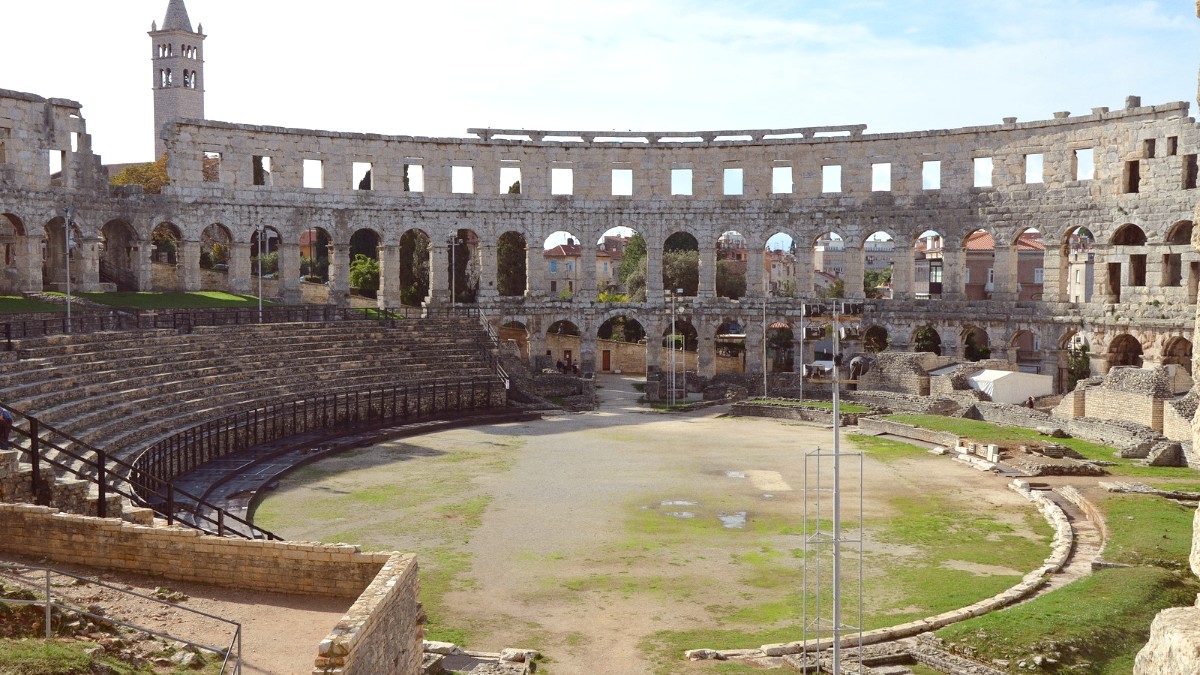
Istria, Croatia
Istrian cuisine, found in Pula, presents a compelling fusion of Mediterranean freshness and continental heartiness. Its distinct identity comes from centuries of influence from Italian (notably Venetian), Austrian, and Slavic cooking traditions. This historical layering is clear in the ingredients and preparation methods that shape local dishes.
Given Pula's coastal location, fresh seafood forms a base. Expect delightful preparations of local fish (orada - sea bream, brancin - sea bass), squid (lignje), octopus (hobotnica), mussels (dagnje), and shrimp (škampi). Grilling is a popular preparation method, highlighting natural flavors.
Istria is famed for wild asparagus in spring and abundant olives, leading to prized olive oil. Both black and white truffles thrive here, adding an earthy, luxury taste to many dishes. Rosemary, bay leaf, sage, and parsley are common herbs. Homemade pasta (fuži and pljukanci) and polenta are staple carbohydrates.
Coastal areas like Pula, Rovinj, and Poreč feature seafood dishes prominently. Inland, hilly areas (Motovun, Buzet) are known for truffles, game meats, and hearty stews. Specific pasta shapes vary slightly by sub-region. Saying 'Dobar tek!' (Enjoy your meal!) to fellow diners shows polite regard.
Istria boasts excellent lamb (janjetina) and pork, especially the air-dried ham known as pršut (similar to Italian prosciutto), often served as an appetizer. You might find it as a tender steak, a rich goulash, or served with homemade pasta. It forms a delicacy unique to the region.
Your Pula visit gains richness by sampling these characteristic Istrian dishes and beverages.
A quintessential Istrian dish. Quill-shaped, hand-rolled pasta, served with an aromatic sauce from local truffles (black or white, by season). Found at any traditional Istrian restaurant or konoba.
A culinary gem of Istria.
Another hand-rolled pasta, thin and worm-like, often with a hearty meat sauce ("šugo"), usually beef (goulash style) or chicken. A comforting and satisfying dish.
Hearty and satisfying comfort food.
Local air-dried ham, similar to Italian prosciutto, with a distinct taste from its drying process and climate. Often a starter with local cheese and olives. A local delicacy.
A flavorful regional cured ham.
Small, spherical fried doughnuts, often flavored with citrus zest and rum, and dusted with powdered sugar. Popular during festive periods.
A savory pastry, flaky and often spiral-shaped, filled with minced meat (mesni burek) or cheese (sirni burek). A popular breakfast or snack, available at bakeries (pekara).
Pula and its surroundings present several fine dining options offering refined Istrian and Croatian cuisine. These establishments often feature extensive wine lists and a sophisticated atmosphere.
These establishments offer a balance of quality and price, providing a wide range of Istrian and Mediterranean dishes in comfortable settings, suitable for various occasions.
For quick, affordable, and tasty options, Pula has many bakeries, pizzerias, and fast-food kiosks. These are perfect for a casual meal or snack on the go.
Due to historical ties, Pula has a good selection of Italian pizzerias and pasta restaurants, offering authentic flavors.
Expect high-quality pizza and fresh pasta dishes.
You can also find some Asian (e.g., Chinese, Japanese) and other European restaurants, though the focus remains on local Istrian and Croatian cuisine. Choices are diverse but specific to Pula's offerings.
Discover global flavors with a local twist.
The main city market, offering fresh, seasonal produce and a lively local atmosphere.
A great place to experience local life and gather ingredients for self-catering.
Find small stalls selling prepared foods, fresh produce, cheese, olive oil, and local snacks.
Discover homemade products directly from local producers.
Many chefs here are accustomed to working with fresh, natural ingredients, making it easier to prepare dishes with simple components and avoid certain allergens.
Do not hesitate to ask for custom preparations.
The emphasis on fresh, local ingredients means many dishes can naturally accommodate various restrictions with minimal adjustments.
Focus on seasonal vegetables and naturally gluten-free options.
Awareness of gluten-free and other common allergies grows, especially in larger or more modern restaurants. Some places might present gluten-free pasta or bread. Inform staff clearly about allergies.
Be specific and polite when discussing your dietary needs. A written note or a translation app can clarify details for the kitchen staff.
Engage in Istrian cooking by attending a class. These often focus on traditional pasta (fuži, pljukanci), truffle dishes, or local seafood. Inquire at local tour agencies or agroturizam farms.
Guided walking tours exploring Pula's food scene. These may include visits to the Pula Market, tastings of local products, and stops at traditional eateries.
Visit local olive oil producers for guided tours and tastings of award-winning extra virgin olive oils. Explore wineries for cellar tours and guided tastings of Malvazija and Teran wines.
Held in April/May, this event celebrates the wild asparagus harvest with special menus and local festivities. A spring culinary highlight.
Taste fresh asparagus dishes.
Autumn (September-November) marks prime truffle season. Major festivals occur in towns like Livade and Buzet, offering tastings, markets, and culinary demonstrations.
Experience the luxury of fresh truffles.
Always ask locals for their favorite spots and daily specials. Many traditional konobas operate away from the main tourist paths, offering genuine experiences.
Cash is often preferred at smaller, local establishments. Look for 'marenda' or 'gablec' for good value lunch specials, typically offered during weekdays.
Be open to trying new dishes; Istrian cuisine rewards an adventurous palate. Consider wine pairings with your meals; local wines complement the cuisine perfectly.
Croatia has high food safety standards. You can generally trust the hygiene of restaurants and markets. Freshness, especially for seafood, is a point of pride.